Appearance Colorless gas | ||
 | ||
Dimethyldiborane is a chemical compound consisting of methyl groups attached to a diborane core. It can be considered as the dimer of methylborane, CH3BH2, the simplest alkylborane, consisting of a methyl group substituted for a hydrogen in borane. There are two isomers. The 1,2-dimethyldiborane form (CH3BH2)2 is symmetrical with one methyl on each boron. 1,2-Dimethyldiborane can exist in a cis- and a trans arrangement. The other isomer is 1,1-dimethyldiborane, known as unsymmetrical dimethyldiborane, which has two methyl groups on one boron atom, and only hydrogen on the other. Other combinations of methylation occur on diborane, including methyldiborane, trimethyldiborane, tetramethyldiborane, and trimethylborane. Tetramethyldiborane is the dimer of dimethylborane. At room temperature the substance is at equilibrium between these forms. The methylboranes were first prepared by H. I. Schlesinger and A. O. Walker in the 1930s.
Contents
Formation
Methylborane is formed when lithium methylborohydride LiCH3BH3 reacts with an acid in tetrahydrofuran.
2 LiCH3BH3 + 2HCl → (CH3BH2)2 + 2H2 + 2 LiCl
Instead of hydrogen chloride, methyl iodide or trimethylsilyl chloride can be used.
Lithium methylborohydride can be made by reacting a methylboronic ester with lithium aluminium hydride.
Methylboranes are also formed by the reaction of diborane and trimethylborane. This reaction produces four different substitution of methyl with hydrogen on diborane. Produced is 1-methyldiborane, 1,1-dimethyldborane, 1,1,2-trimethyldiborane and 1,1,2,2-tetramethyldiborane. By reacting monomethyldiborane with ether, dimethyl ether borine is formed (CH3)2O.BH3 leaving methylborane which rapidly dimerises to 1,2-dimethyldiborane. The reaction is complex. At 0 °C when diborane is in excess, monomethyldiborane is initially produced, coming to a steady but low level, and 1,1-dimethyldiborane level increases over a long time, until all trimethylborane is consumed. Monomethyldiborane ends up at equilibrium with a mixture of diborane and dimethyldiborane. At 0° the equilibrium constant for 2B2H5Me ←→ B2H6 + (BH2Me)2 is around 0.07, so monomethyldiborane will typically be the majority of the mixture, but there will still be a significant amount of diborane and dimethyldiborane present. Monomethyldiborane yield is best with a ratio of 4 of diborane to 1 of trimethylborane. The yield of trimethyldiborane is maximised with ratio of 1 of diborane to 3 of trimethylborane.
Tetramethyl lead can react with diborane in a 1,2-dimethoxyethane solvent at room temperature to make a range of methyl substituted diboranes, ending up at trimethylborane, but including 1,1-dimethyldiborane, and trimethyldiborane. The other outputs of the reaction are hydrogen gas and lead metal.
Other methods to form methyldiboranes include reacting hydrogen with trimethylborane between 80 and 200 °C under pressure, or reacting a metal borohydride with trimethylborane in the presence of hydrogen chloride, aluminium chloride or boron trichloride. If the borohydride is sodium borohydride, then methane is a side product. If the metal is lithium then no methane is produced. dimethylchloroborane and methyldichloroborane are also produced as gaseous products.
When Cp2Zr(CH3)2 reacts with borane dissolved in tetrahydrofuran, a borohydro group inserts into the zirconium carbon bond, and methyl diboranes are produced.
In ether dimethylcalcium reacts with diborane to produce dimethyldiborane and calcium borohydride.
Ca(CH3)2 + 2B2H6 → Ca(BH4)2 + B2H4(CH3)2.Properties
Methylborane can dissolve in liquid pentane, ethyl ether, or tetrahydrofuran.
Unsymmetrical 1,1-dimethyldiborane boils at -4 °C, whereas symmetrical 1,2-dimethyldiborane boils at +4 °C.
Cis-1,2-dimethyldiborane melts at -132.5 °C. Trans-1,2-dimethyldiborane melts at -102 °C. The cis-1,2-dimethyldiborane molecule has point group Cs. A trans-1,2-dimethyldiborane molecule has point group C2. Unsymmetrical dimethyldiborane melts at -150.2 °C. Vapour pressure is approximated by Log P = 7.363-(1212/T). The vapour pressure for the symmetrical isomer is given by Log P = 7.523-(1290/T).
1,1-Dimethyldiborane has a dipole moment of 0.87 d. The predicted heat of formation for the liquid is ΔH0f=-31 kcal/mol, and for the gas -25 kcal/mol. Heat of vapourisation was measured at 5.5 kcal/mol.
A gas chromatograph can be used to determine the amounts of the methyl boranes in a mixture. The order they pass through are diborane, monomethyldiborane, trimethylborane, 1,1-dimethyldiborane, 1,2-dimethyldiborane, trimethyldiborane, and last tetramethyldiborane.
The nuclear resonance shift for the bridge hydrogen is 9.55 ppm for the unsymmetrical isomer and 9.73 ppm for the symmetrical isomers, compared to 10.49 for diborane.
Reactions
In most solvents methylborane reacts with alkenes to produce the dialkylmethylborane. R2CH3BH
However, in tetrahydrofuran, methylborane only reacts with one part alkene to make an alkylmethylborane. (RCH3BH)2
At -78.5 °C methyldiborane disproportionates slowly first to diborane and 1,1-dimethyldiborane. In solution methylborane is more stable against disproportionation than dimethylborane.
2MeB2H5 = 1,1-Me2B2H4 + B2H6 K=2.8 Me=CH3. 3[1,1-Me2B2H4] = 2 Me3B2H3 + B2H6 K=0.00027.1,2-dimethyldiborane slowly converts on standing to 1,1-dimethyldiborane.
Trimethyldiborane partially disproportionates over a period of hours at room temperature to yield tetramethyldiborane and 1,2-dimethyldiborane. Over a period of weeks 1,1-dimethyldiborane appears as well.
Methylborane is hydrolyzed in water to methylboronic acid CH3B(OH)2. Symmetrical dimethyldiborane reacts with trimethylamine to yield a solid derivative trimethylamine-methylborane (CH3)3N—BH2CH3.
Methyldiborane spontaneously inflames when exposed to air.
Gentler oxidation of 1,1-dimethyldiborane at 80 °C yields 2,5-dimethyl-1,3,4-trioxadiboralane, a volatile liquid that contains a ring of two boron and three oxygen atoms. An intermediate in this reaction is two molecules of dimethylborylhydroperoxide (CH3)2BOOH. (CAS 41557-62-5) When methyldiborane is oxidised around 150 °C a similar substance methyltrioxadiboralane is produced. At the same time dimethyltrioxadiboralane and trimethylboroxine are also formed, and also hydrocarbons, diborane, hydrogen, and dimethoxyborane (dimethyl methylboronic ester).
When dimethyldiborane is combined with ammonia and heated, B-methyl borazoles are produced. These borazoles can have one, two or three methyl groups substituted on the bron atoms.
Methyl cyanide reacts slowly with 1,1-dimethyldiborane at room temperature to form dimeric ethylideneaminodimethylborane (CH3CH=NB(CH3)2)2 and N,N',N"-triethylborazole.
Under normal conditions dimethyldiborane does not react with hydrogen.
Related
Trihydromethylborate [CH3BH3]− is an ion that can form salts with lithium or the lanthanides.
Other alkyl boranes such as two isomers of diethyldiborane can be produced by analogous methods.
Higher boranes also can form dimethyl compounds, including 1,2- 2,2- and 2,4-dimethyltetraborane, 1,2-dimethylpentaborane 2,3-dimethylpentaborane, 4,5-dimethylhexaborane, and 5,6- 6,8- 6,9-dimethyldecaborane.
